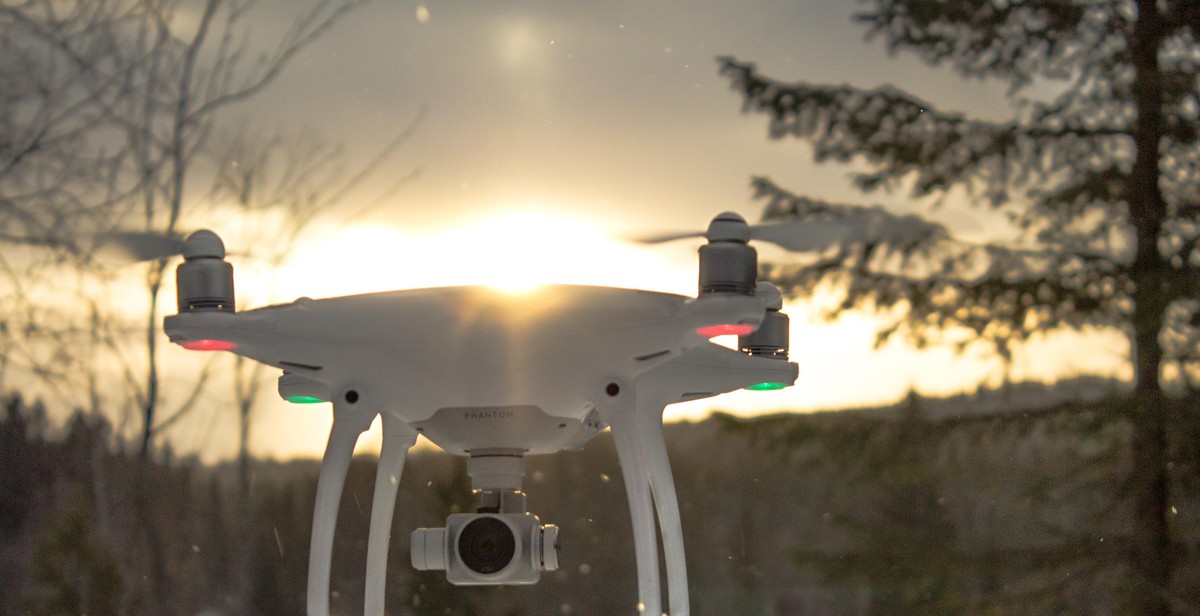The Evolution of Chatbots: From ELIZA to GPT-4
Chatbots have come a long way since their inception in the 1960s. Initially created as a way to simulate conversation between a human and a computer, chatbots have evolved to become sophisticated artificial intelligence (AI) tools capable of performing a wide range of tasks.
What are Chatbots?
Chatbots are computer programs designed to simulate conversation with human users. They use natural language processing (NLP) and machine learning (ML) algorithms to understand and respond to user queries in a conversational manner. Chatbots can be integrated into various platforms, including websites, messaging apps, and voice assistants, to provide users with a seamless and personalized experience.
Over the years, chatbots have undergone significant improvements in their capabilities and functionalities. From the early days of ELIZA, a simple rule-based chatbot, to the latest advancements in GPT-4, a language model capable of generating human-like responses, chatbots have become an essential tool for businesses and organizations to automate customer service, improve engagement, and boost productivity.
In this article, we will explore the evolution of chatbots from their early beginnings to the latest advancements in AI technology. We will examine the different types of chatbots, their applications, and the future of chatbot technology.

The Early Days of Chatbots
Chatbots have been around for over 50 years, with the first chatbot, ELIZA, created in 1966 by Joseph Weizenbaum, a computer scientist at MIT. ELIZA was designed to simulate conversation with a psychotherapist, and it was based on a simple pattern recognition algorithm that could respond to user inputs with pre-programmed phrases.
Despite its limitations, ELIZA was a groundbreaking development in the field of artificial intelligence and natural language processing. It demonstrated that computers could be programmed to engage in human-like conversation, and it laid the foundation for future advancements in chatbot technology.
SmarterChild: The Chatbot for AIM
Fast forward to the early 2000s, and chatbots had evolved to a point where they were becoming mainstream. One of the most popular chatbots of this era was SmarterChild, which was designed to run on the AOL Instant Messenger (AIM) platform.
SmarterChild was created by ActiveBuddy, a company that specialized in developing chatbots for various platforms. The chatbot was designed to provide users with information and assistance on a wide range of topics, including news, weather, sports, and entertainment.
SmarterChild’s success was due in part to its ability to engage users in natural, human-like conversation. The chatbot used a combination of pre-programmed responses and machine learning algorithms to understand user inputs and provide relevant information.
Conclusion
ELIZA and SmarterChild were just the beginning of the chatbot revolution. Over the years, chatbots have continued to evolve and improve, with modern chatbots like GPT-4 using advanced machine learning algorithms to provide even more sophisticated and personalized responses.

The Rise of AI and Machine Learning
The evolution of chatbots can be attributed to the advancements in artificial intelligence (AI) and machine learning (ML) technologies. AI and ML have revolutionized the way businesses interact with their customers, and chatbots are at the forefront of this revolution.
AI and Machine Learning in Chatbots
AI-driven chatbots use natural language processing (NLP) to understand and interpret human language. They are equipped with machine learning algorithms that enable them to learn from customer interactions and improve their responses over time. This means that the more a chatbot interacts with customers, the more accurate and personalized its responses become.
Machine learning also enables chatbots to understand the context of a conversation and provide relevant responses. For example, if a customer asks a chatbot about a product, the chatbot can analyze the customer’s previous interactions with the brand and provide personalized recommendations based on their preferences.
The Advantages of AI-Driven Chatbots
AI-driven chatbots offer several advantages over traditional chatbots. Firstly, they provide a more personalized and human-like interaction with customers. This improves customer satisfaction and helps build brand loyalty.
Secondly, AI-driven chatbots are available 24/7 and can handle multiple conversations simultaneously. This means that businesses can provide fast and efficient customer support without the need for a large customer service team.
Finally, AI-driven chatbots can collect and analyze customer data, providing valuable insights into customer behavior and preferences. This data can be used to improve products and services, as well as inform marketing and sales strategies.
| Advantages of AI-Driven Chatbots |
|---|
| Personalized and human-like interaction |
| 24/7 availability and efficiency |
| Data collection and analysis |
Overall, the rise of AI and machine learning has transformed the chatbot industry, enabling businesses to provide fast, efficient, and personalized customer support. As AI technology continues to evolve, we can expect chatbots to become even more advanced and human-like in their interactions.

The Emergence of Natural Language Processing
As chatbots have evolved over the years, one of the most significant advancements has been the emergence of natural language processing (NLP). NLP is a subfield of artificial intelligence that focuses on enabling computers to understand, interpret, and generate human language.
What is Natural Language Processing?
At its core, NLP is all about enabling machines to understand human language. This involves teaching them to recognize and interpret the nuances of language, including things like grammar, syntax, and context.
Some of the key components of NLP include:
- Tokenization: Breaking down text into individual words or phrases
- Part-of-speech tagging: Identifying the grammatical role of each word in a sentence
- Sentiment analysis: Determining the emotional tone of a piece of text
- Named entity recognition: Identifying and categorizing named entities (e.g. people, places, organizations)
How NLP Enhances Chatbots
By incorporating NLP into chatbots, developers can create more sophisticated conversational experiences. Instead of relying on rigid scripts or keyword matching, chatbots can be trained to understand natural language inputs and respond accordingly.
For example, a chatbot that uses NLP might be able to understand and respond to questions like:
“What’s the weather like today?”
“Can you recommend a good Italian restaurant in the area?”
“What’s the latest news on the stock market?”
Without NLP, these types of questions might be difficult or impossible for a chatbot to understand and respond to.
Overall, the emergence of NLP has been a game-changer for the world of chatbots. By enabling machines to understand and generate human language more effectively, NLP has opened up new possibilities for natural, intuitive, and engaging conversational experiences.

The Current State of Chatbots
Chatbots have come a long way since their inception in the 1960s with ELIZA, the first chatbot designed to mimic human conversation. Today, chatbots are widely used in businesses to improve customer service, automate tasks, and increase efficiency.
Chatbots in Business
Chatbots have become an essential tool for businesses of all sizes, providing a cost-effective way to handle customer inquiries and support. They can be integrated into websites, messaging platforms, and mobile apps, providing customers with instant access to information and assistance.
Chatbots can also be used to automate tasks such as appointment scheduling, order tracking, and payment processing, freeing up employees to focus on higher-level tasks. This can lead to increased efficiency and cost savings for businesses.
Another benefit of chatbots in business is their ability to collect valuable data and insights. By analyzing customer interactions, businesses can gain a better understanding of their customers’ needs and preferences, allowing them to improve their products and services.
The Future of Chatbots
The future of chatbots looks bright, with advancements in natural language processing (NLP) and artificial intelligence (AI) making them more intelligent and capable of handling complex tasks.
One area where chatbots are expected to make a significant impact is in healthcare. Chatbots can be used to provide patients with medical advice, monitor their symptoms, and schedule appointments with healthcare providers.
Chatbots are also expected to play a more significant role in e-commerce, providing personalized recommendations and assistance to customers as they shop online.
As chatbots become more sophisticated, they are also becoming more human-like, blurring the line between human and machine interaction. This has led to concerns about the potential impact on jobs, but many experts believe that chatbots will ultimately be used to augment human capabilities rather than replace them.
| Pros | Cons |
|---|---|
| Cost-effective | May not always provide accurate responses |
| 24/7 availability | May lack empathy and emotional intelligence |
| Increased efficiency | May lead to job displacement |
| Collects valuable data and insights | May not be suitable for all industries or tasks |
Overall, chatbots are becoming an increasingly important tool for businesses looking to improve customer service, automate tasks, and increase efficiency. As technology continues to advance, we can expect chatbots to become even more intelligent and capable of handling complex tasks, making them an indispensable part of our daily lives.

The Future of Chatbots
The development of chatbots has come a long way from the early days of ELIZA, and the future looks even more promising with the emergence of GPT-4, the next generation of chatbots.
GPT-4: The Next Generation of Chatbots
GPT-4 is the latest chatbot from OpenAI, and it promises to be a game-changer in the world of chatbots. It is expected to be more intelligent, more versatile, and more human-like than its predecessors. GPT-4 will be able to understand and respond to natural language better than any chatbot before it. It will also be able to learn from conversations and improve its responses over time.
The Possibilities of GPT-4
GPT-4 has the potential to revolutionize the way we interact with chatbots. It could be used in a variety of industries, such as healthcare, finance, and customer service. In healthcare, GPT-4 could be used to diagnose and treat patients, while in finance, it could be used to provide financial advice and investment recommendations.
Another possibility for GPT-4 is in the creation of virtual assistants that are truly indistinguishable from humans. These assistants could be used to provide personalized support to individuals, helping them with everything from scheduling appointments to managing their finances.
Conclusion
The future of chatbots looks bright with the emergence of GPT-4. With its advanced capabilities, it has the potential to change the way we interact with chatbots and revolutionize a variety of industries. As chatbot technology continues to evolve, we can only imagine what new possibilities will emerge.
